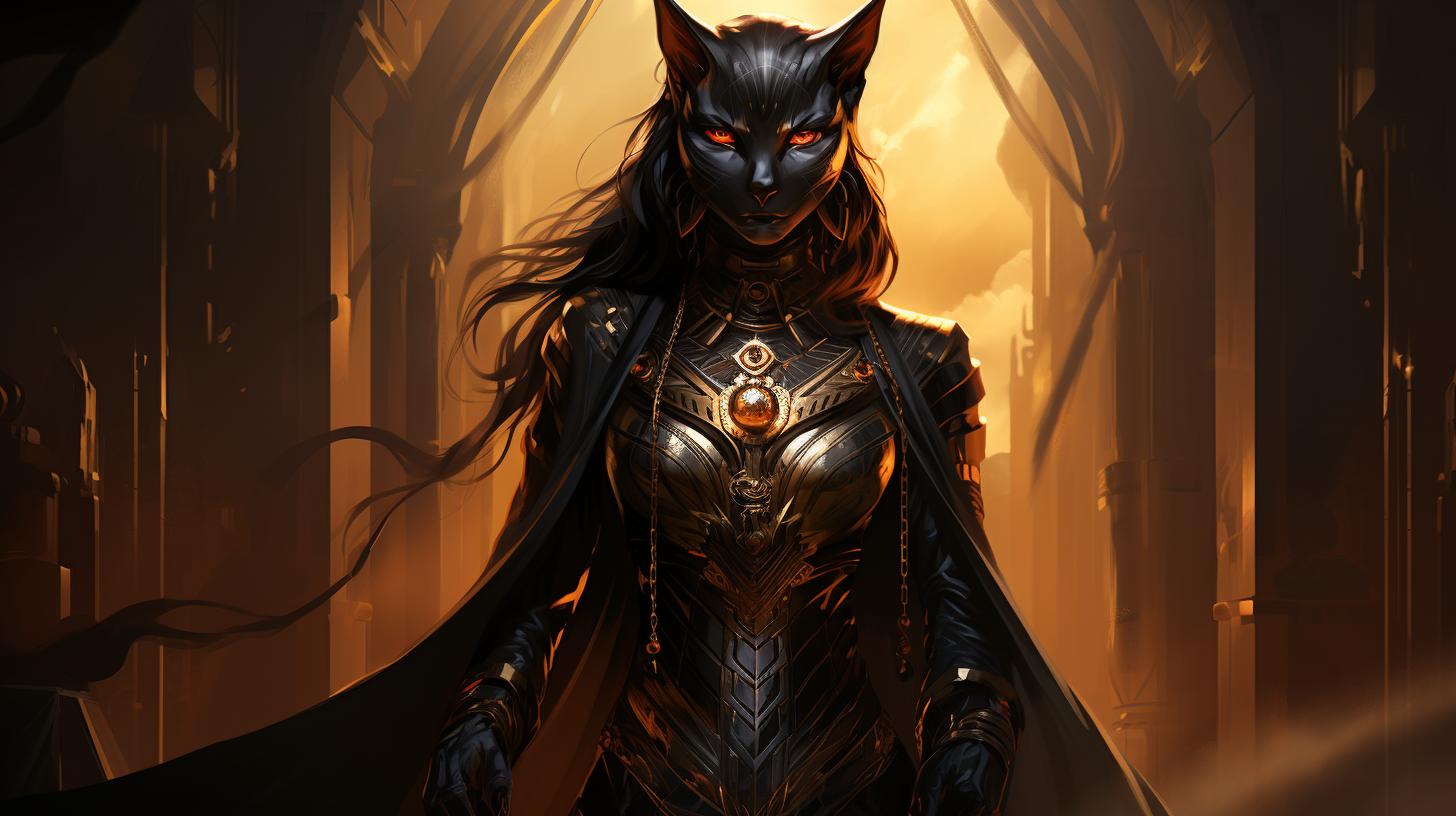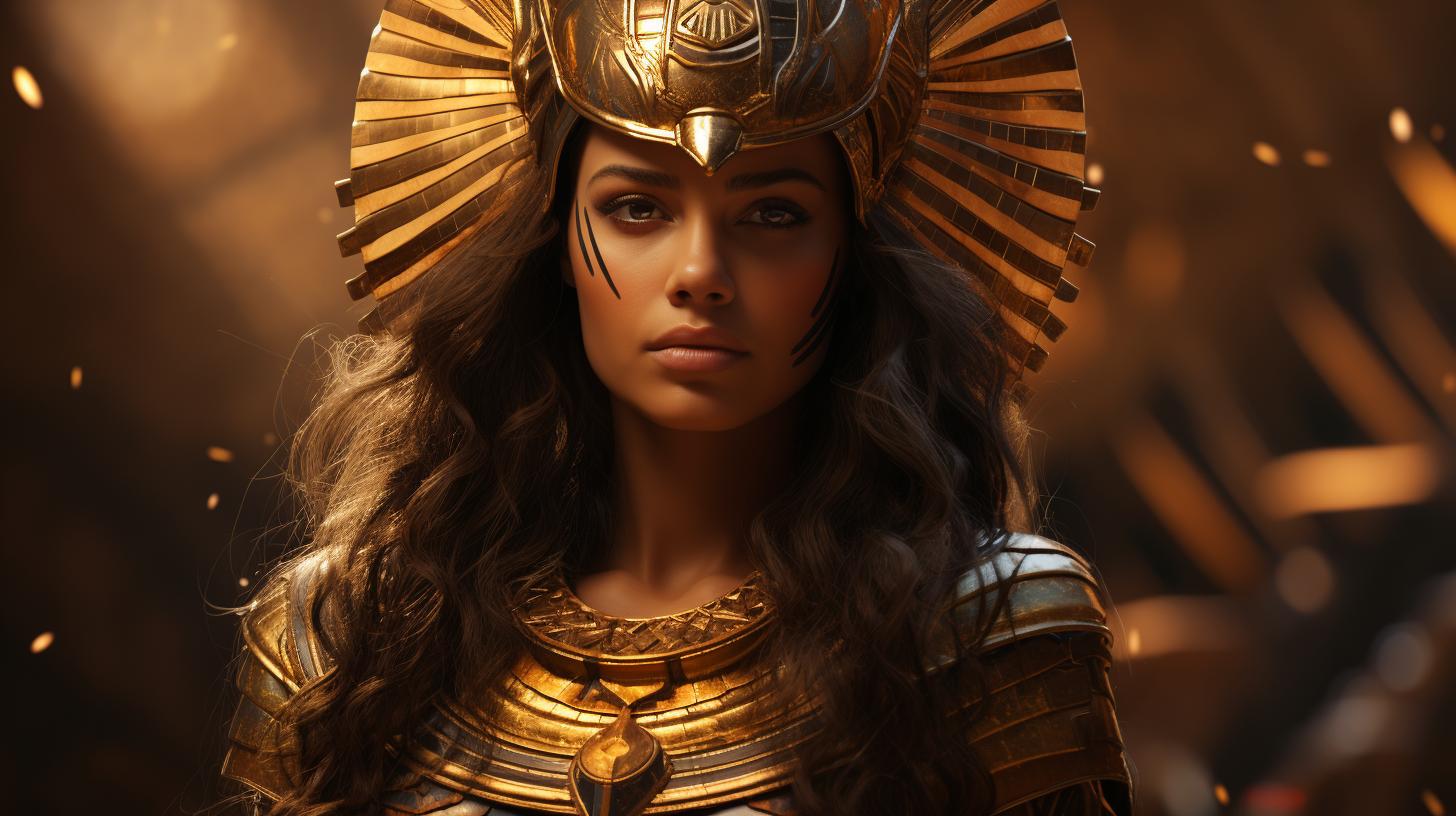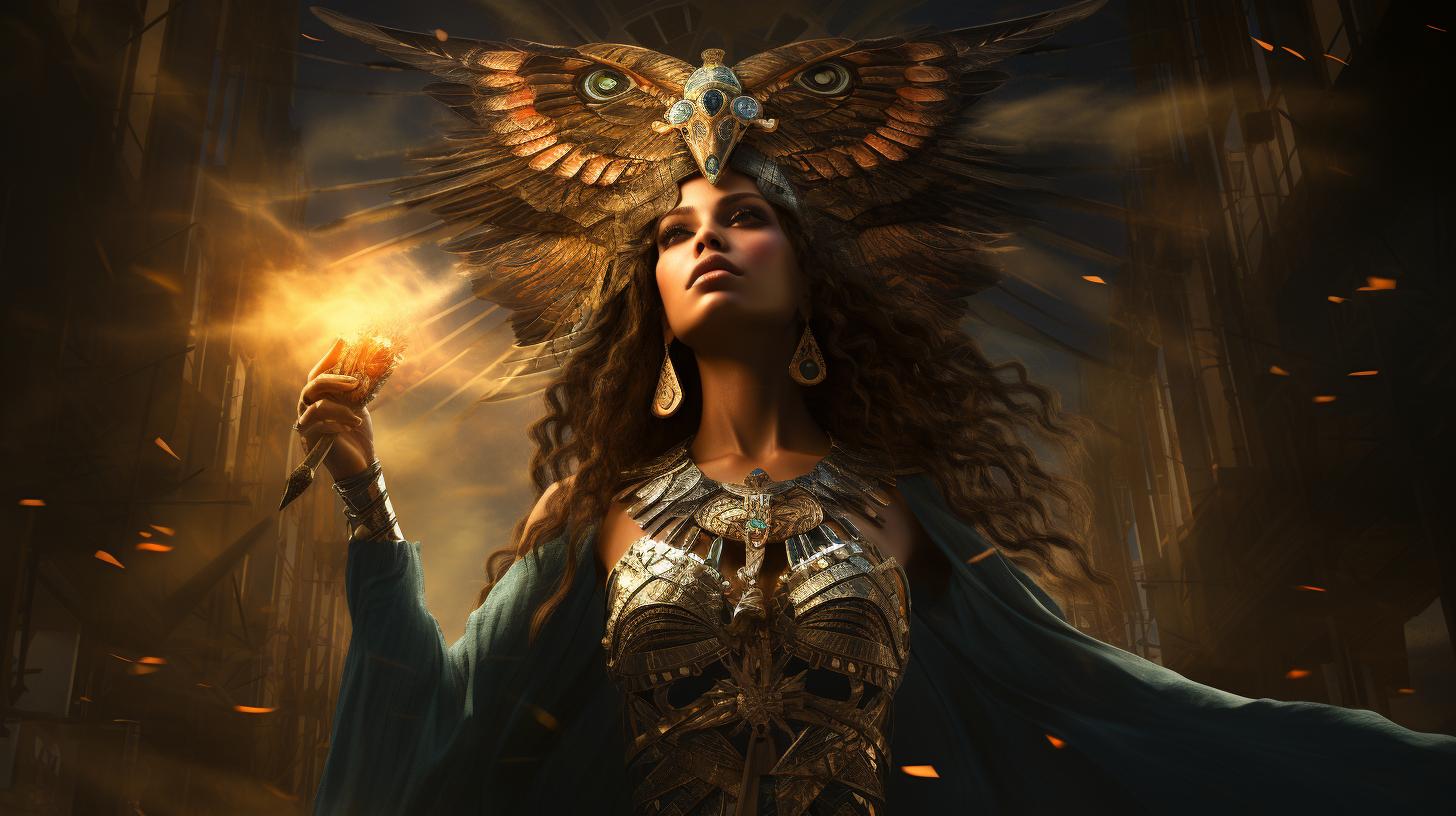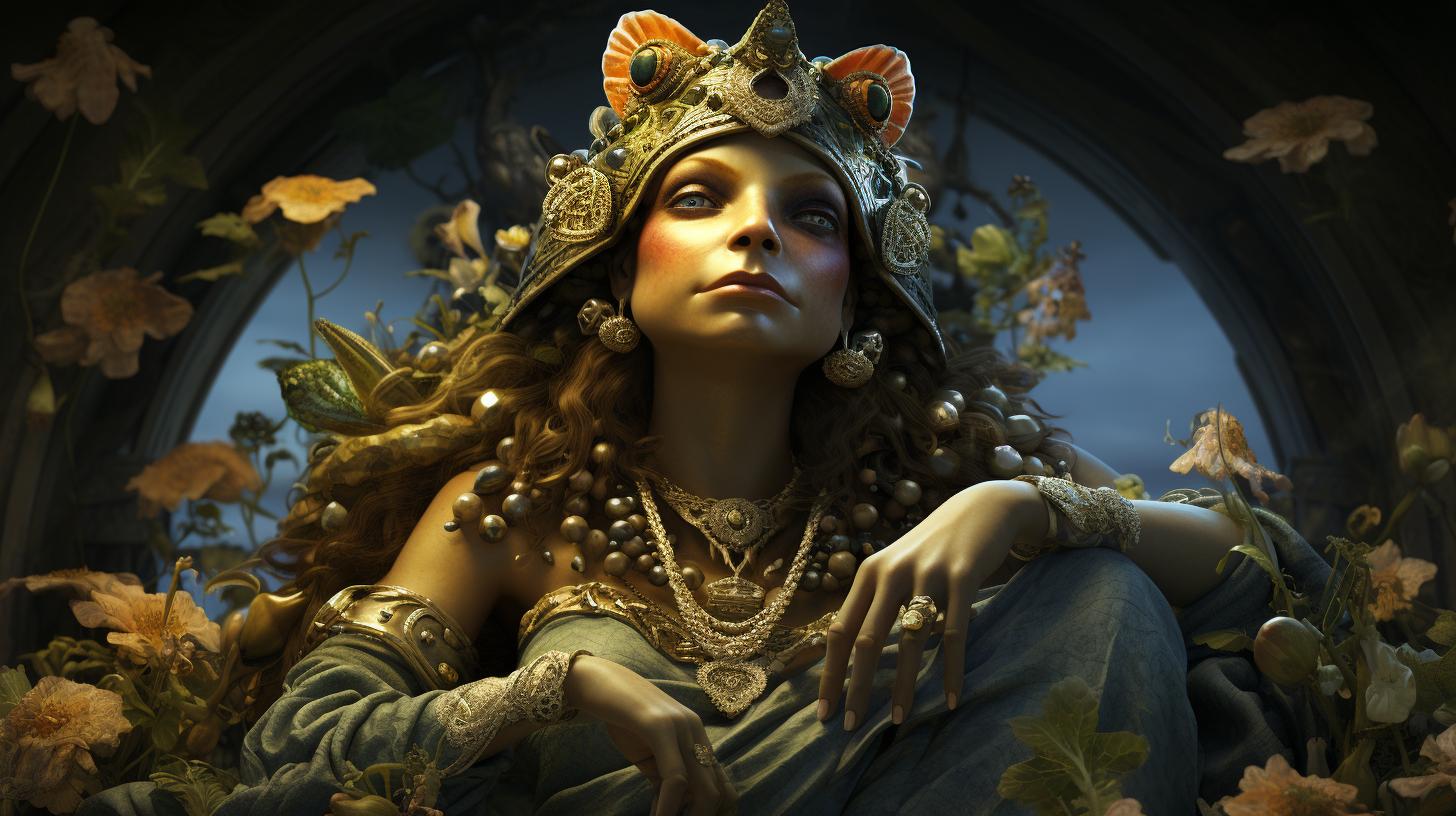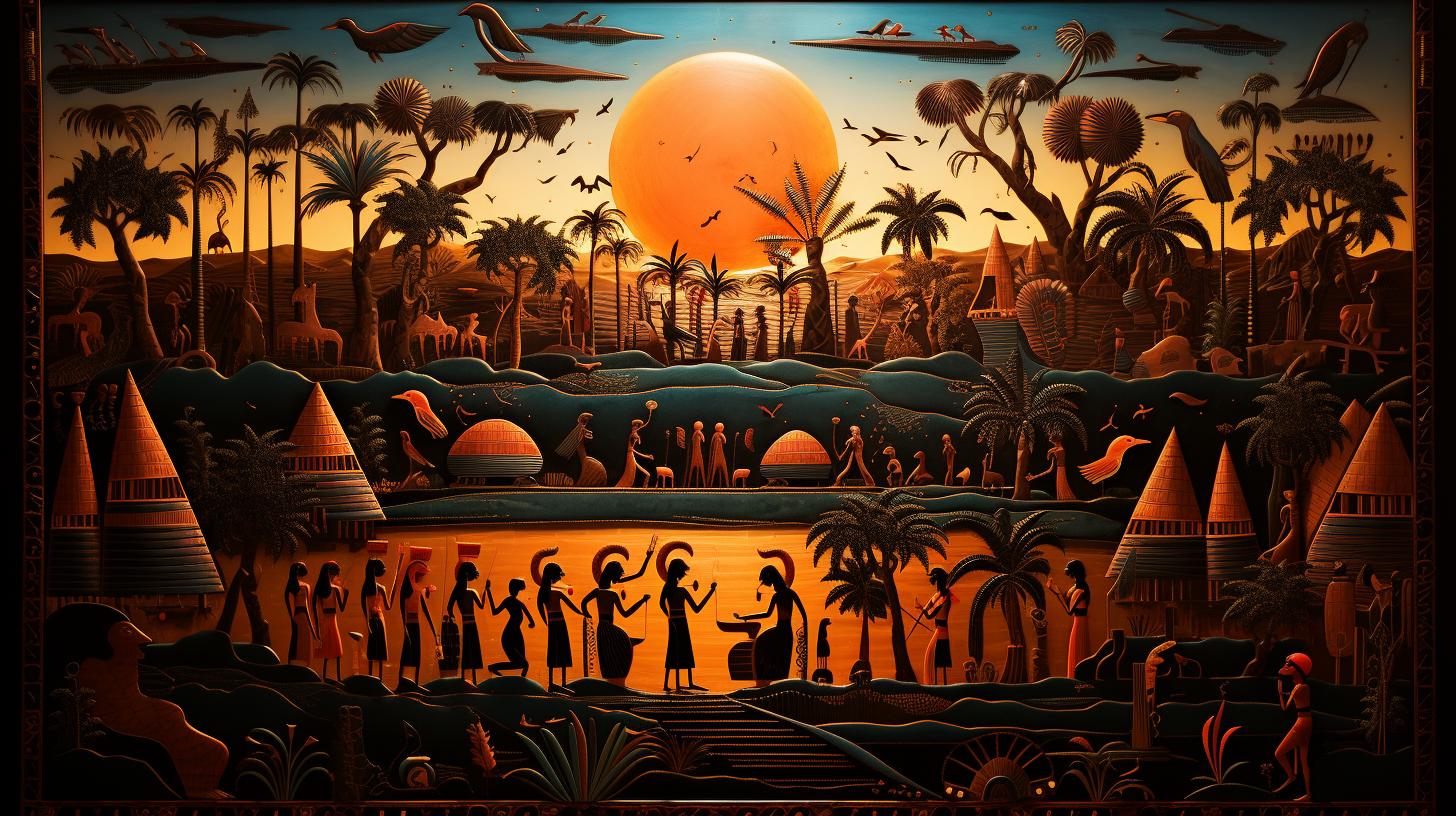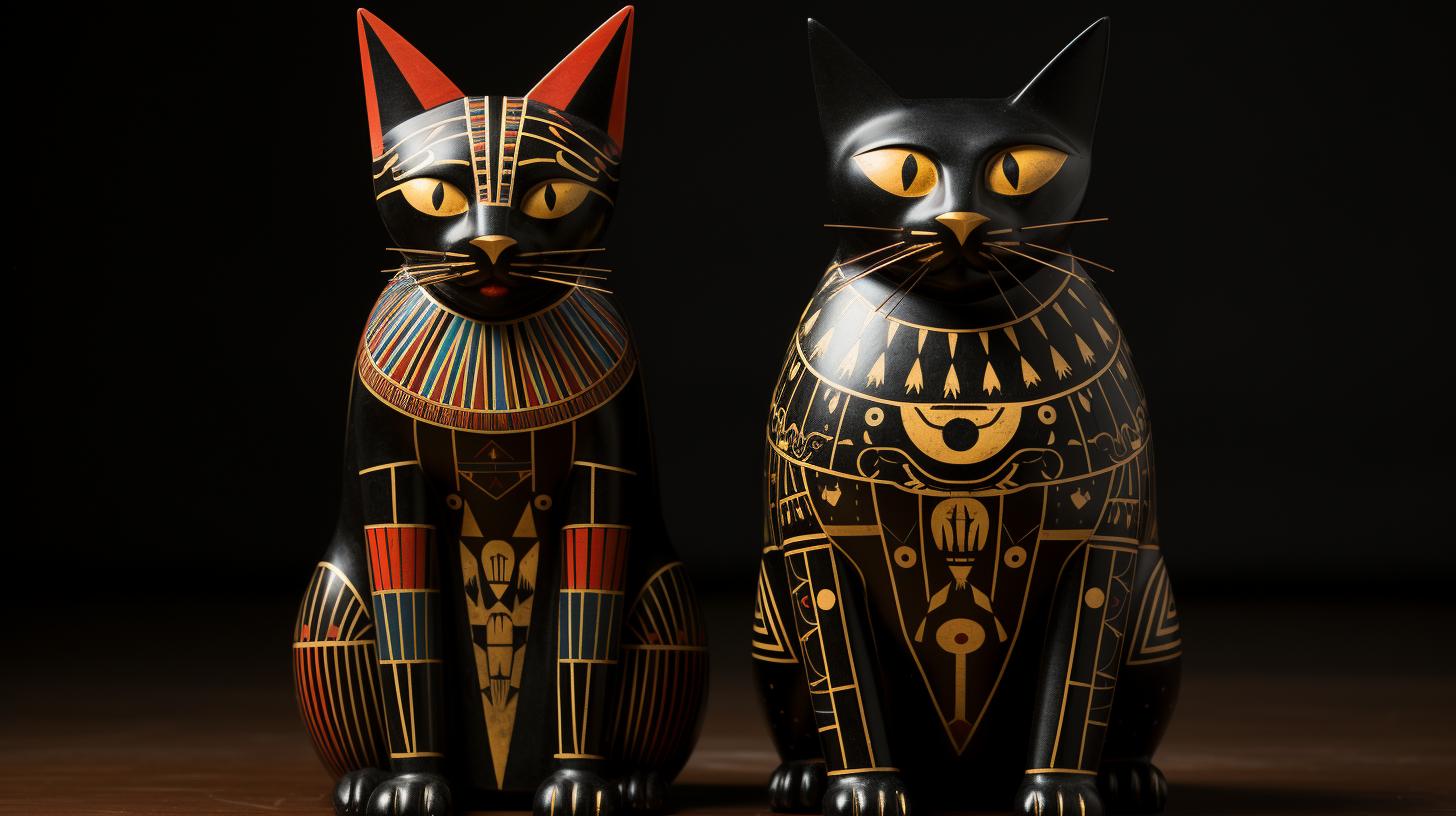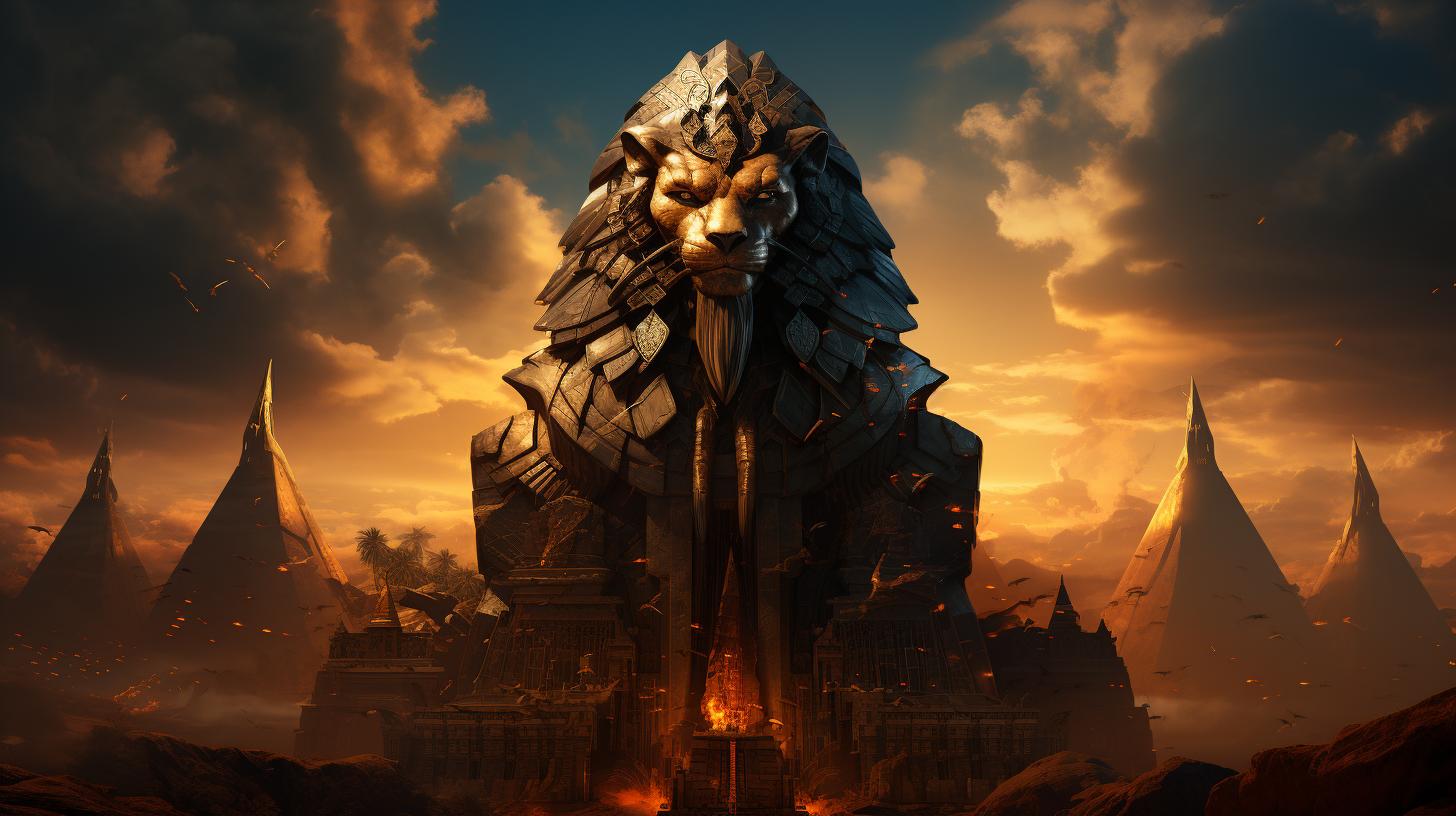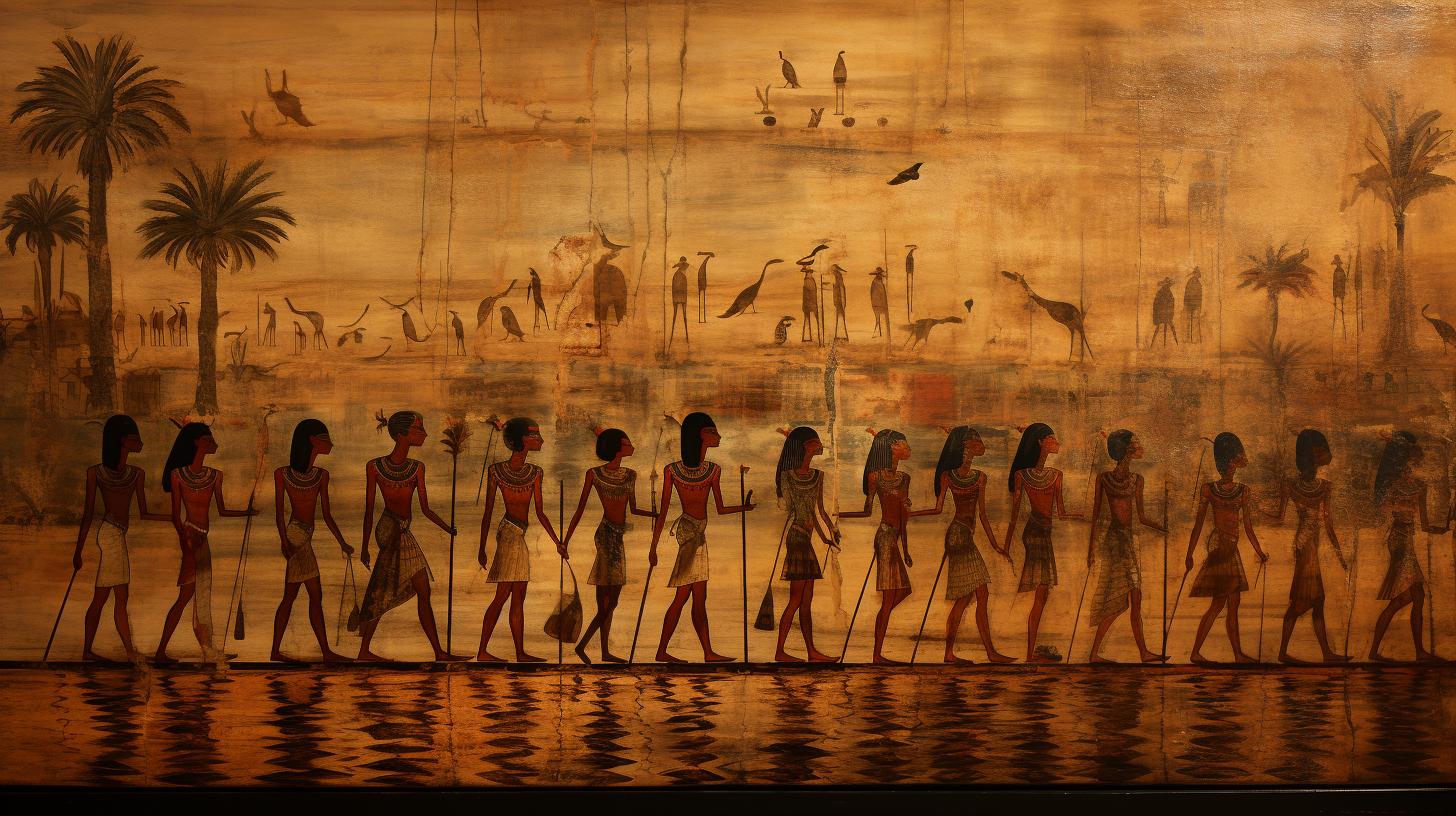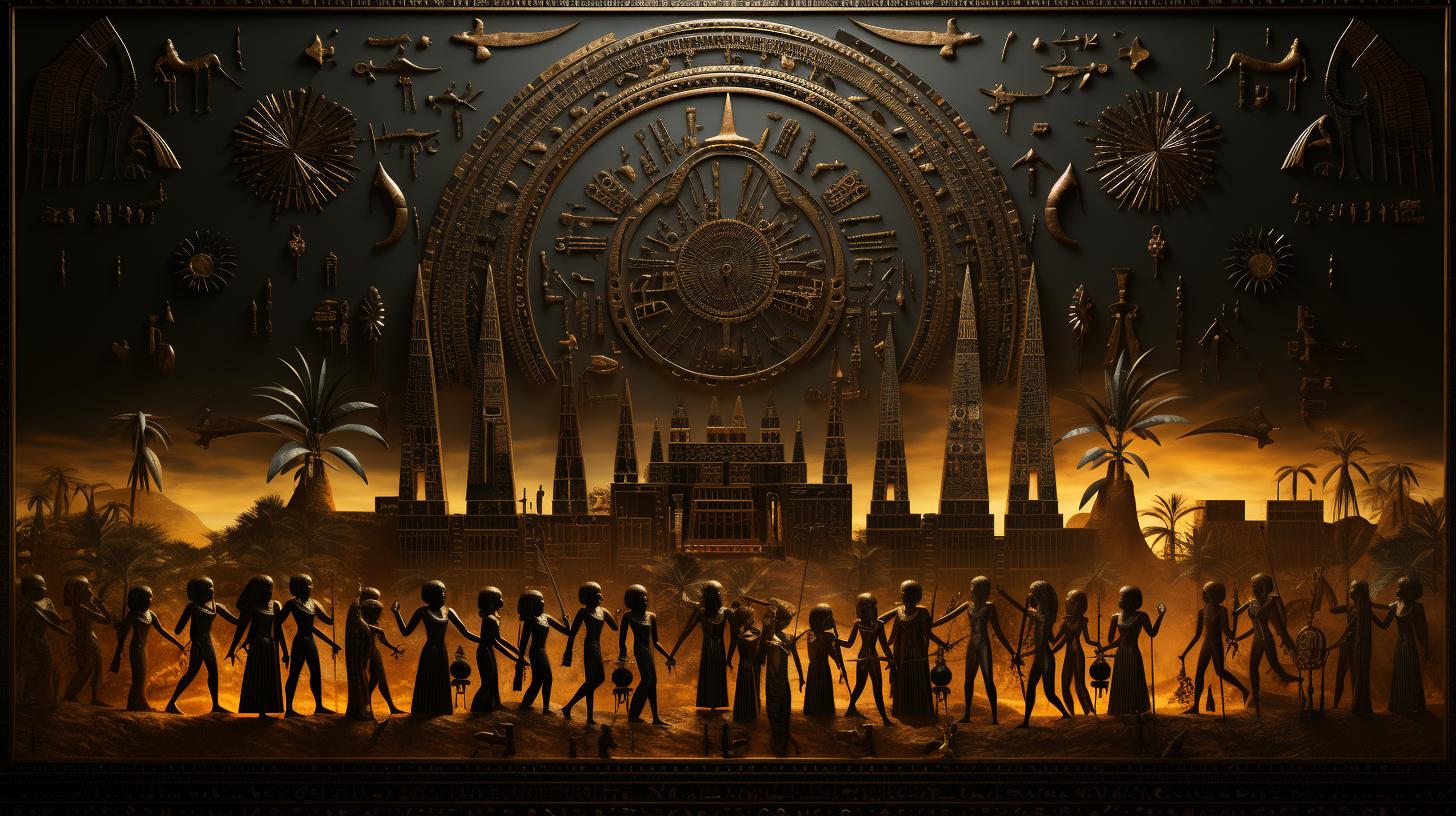Who is Bastet, the Egyptian Goddess of Cats: Unveiling Ancient Egypt’s Feline Deity
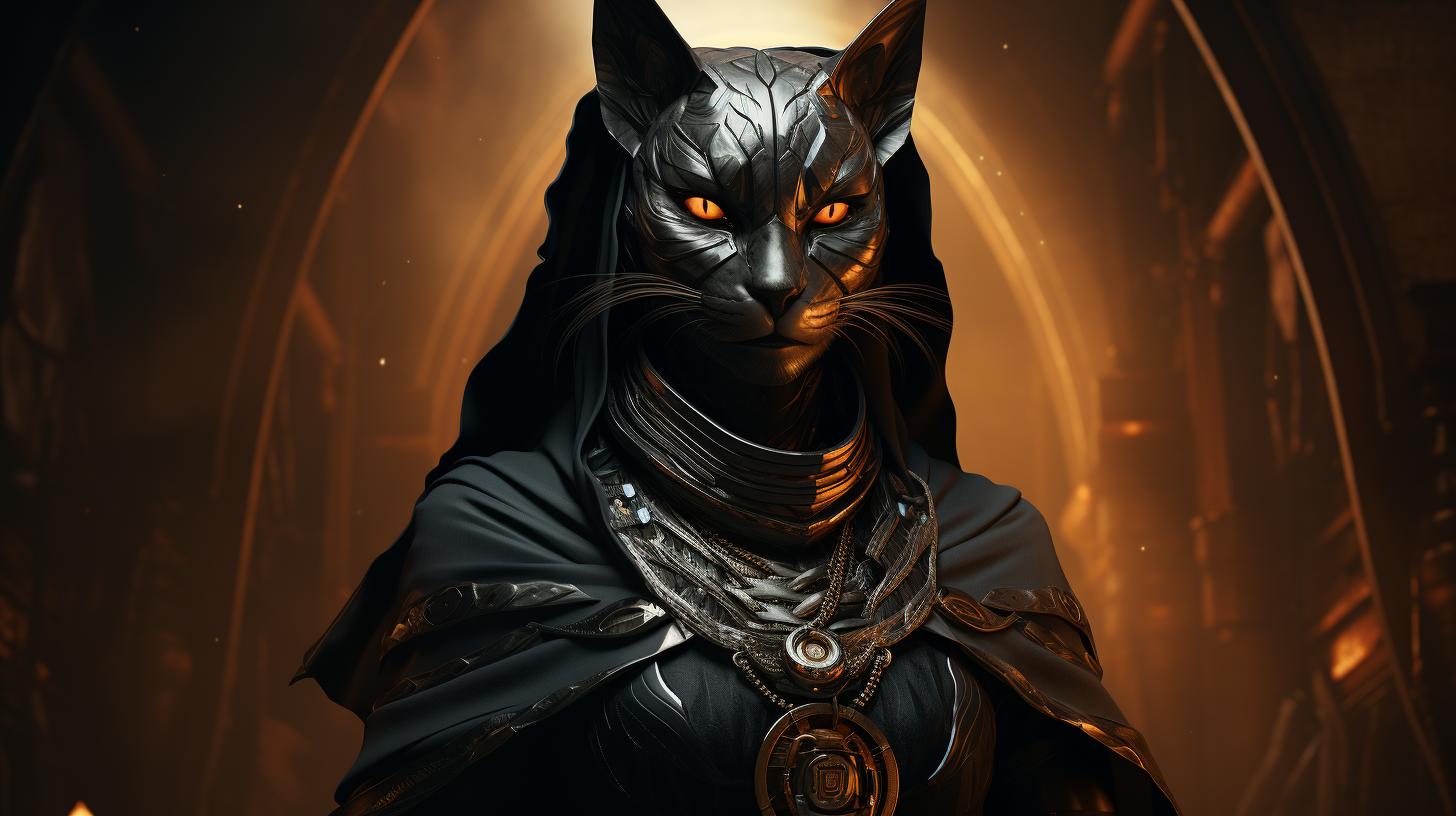
Bastet, the Egyptian goddess of cats, played a significant role in ancient Egypt’s religious landscape. She was revered as a protector and guardian, associated with the sun and other gods.
Cats held a sacred status in Egyptian culture, symbolizing protection and fertility. The worship of Bastet was concentrated in the city of Bubastis, where cat mummification and elaborate rituals took place.
Today, Bastet’s influence can still be seen in modern Egyptian culture and her protection extends to our beloved feline companions. Stay tuned to explore the captivating mythology surrounding Bastet and the enduring legacy of her worship.
Bastet: An Overview of the Egyptian Goddess of Cats
Bastet, the Egyptian goddess of cats, holds immense significance in the ancient Egyptian mythology. Her role and importance in the culture of ancient Egypt are a testament to the reverence Egyptians had for feline creatures.
Let’s delve into the various aspects of Bastet and understand her significance in the ancient Egyptian pantheon.
Role and Importance of Bastet in Ancient Egypt
Bastet played a crucial role as a guardian and protector in ancient Egypt. She was widely revered for her ability to safeguard against evil and bring fertility and abundance. Egyptians believed that Bastet offered protection, not only to individuals but also to the entire kingdom.
She symbolized the nurturing and protective qualities associated with motherhood.
Depiction and Symbolism of Bastet
Bastet was often depicted as a lioness or a woman with the head of a lioness or domestic cat. This duality in her representation reflected her association with both ferocity and nurturing qualities.
The lioness form showcased her power and protective instincts, while her cat form symbolized her connection to domesticity, fertility, and sensuality.
Bastet’s Association with the Sun and Other Gods
Bastet held a significant association with the sun, known as the “eye of Ra” or the “eye of the moon.” This connection portrayed her as a symbol of illumination, light, and warmth.
Furthermore, Bastet’s closeness with other gods, including Ra and Osiris, further enhanced her importance and role within the Egyptian pantheon.
In conclusion, Bastet, the Egyptian goddess of cats, played a vital role in ancient Egyptian culture.
Revered for her protective nature and association with the sun and other gods, she symbolized both ferocity and domesticity. Understanding Bastet’s significance provides insights into the deep-rooted reverence ancient Egyptians held for feline creatures and the spiritual beliefs they associated with these majestic animals.
Cats in Ancient Egyptian Culture
In ancient Egyptian culture, cats held a significant and revered position. They were seen as sacred animals, symbolizing grace, agility, and independence. The Egyptians believed that cats possessed supernatural qualities and were closely connected to the divine realm.
The role of cats went beyond mere companionship; they were considered protectors and bringers of good fortune.
Cats as Sacred Animals in Ancient Egypt
Cats were highly regarded as sacred beings in ancient Egypt. They were associated with the goddess Bastet, who was both a protector and an embodiment of the o utmost felinity. Egyptians believed that cats possessed a spiritual energy that could ward off evil spirits and bring blessings to their homes.
It was believed that harming a cat, even accidentally, would result in severe consequences.
Cats as Guardians and Symbol of Protection
Cats were also seen as guardians, keeping homes and even temples free from vermin and harmful creatures. They were known to exterminate rats, mice, and snakes, preventing diseases and maintaining hygiene.
Due to their exceptional hunting abilities, cats were valued for their protective nature, both in the physical and metaphysical sense.
The Cult of Cats and Bastet Worship
The worship of Bastet, the goddess of cats, was an integral part of ancient Egyptian culture. Temples dedicated to Bastet were prevalent, particularly in Bubastis, where elaborate rituals and festivities took place in her honor.
Bastet was not only venerated as the protector of felines but also as a guardian of home and hearth, fertility, and joy. Worshippers offered gifts, prayers, and sacrifices to seek the benevolence of Bastet and ensure her favor in their lives.
In conclusion, cats held immense importance in ancient Egyptian culture. They were considered sacred beings, protectors, and symbols of grace and elegance. The worship of Bastet, the goddess of cats, was deeply ingrained in Egyptian society, and her influence extended to various aspects of daily life.
The reverence for cats and their association with divinity reflects the intricate relationship between the natural world and the spiritual realm in ancient Egypt.
Bastet’s Connection with Ra and Other Gods
Within the fascinating pantheon of Egyptian deities, Bastet shares a unique connection with Ra, the powerful god of the sun.
Let’s explore the different aspects of Bastet’s relationship with Ra and other prominent gods in Egyptian mythology.
Bastet as the Daughter of Ra
In ancient Egyptian belief, Bastet was revered as the daughter of Ra, the sun god. This divine lineage elevated her status and solidified her connection to the sun. As the offspring of the primary solar deity, Bastet inherited both the radiance and protective qualities associated with the sun.
The Relationship between Bastet and Osiris
Besides her association with Ra, Bastet also formed a significant relationship with Osiris, the god of the afterlife and resurrection. In certain mythological accounts, Bastet is regarded as the consort or sister of Osiris, solidifying her connection to the cycles of life, death, and rebirth.
This affiliation further emphasized her authority over protection and fertility.
Bastet’s Role in the Solar Mythology
As a goddess linked to the sun, Bastet played a crucial role in the intricate solar mythology of ancient Egypt. She was considered the eye of Ra, representing the power and watchful nature of the sun god.
Bastet’s role in solar mythology intertwined with her responsibility as a guardian, affirming her role in maintaining order and ensuring the prosperity of the kingdom.
Bastet’s connection with Ra and her involvement in solar mythology underscore her significance in Egyptian religious beliefs.
Her divine heritage, association with the sun, and relationship with other gods solidify her influential role as both a protector and an integral part of the Egyptian pantheon.
Bastet and the Cult of Bubastis
Bastet, the Egyptian goddess of cats, held a prominent role in the ancient civilization, particularly in the city of Bubastis.
This section delves into the significance of Bubastis as the center of Bastet’s worship, the intriguing practice of cat mummification, and the influence of Bastet that extended beyond Egypt, reaching the Roman world.
Bubastis: The Center of Bastet’s Worship
The city of Bubastis, located in the Nile Delta, stood as the primary center for the veneration of Bastet. It was here that grand temples dedicated to the goddess were erected, bustling with elaborate rituals performed by devoted priests and priestesses.
Bubastis served as a hub of religious activity, drawing worshippers from across ancient Egypt.
Mummification of Cats and Cat Cemeteries
One of the fascinating aspects of Bastet’s cult in Bubastis was the practice of mummifying cats. Cats were not just cherished pets; they held a sacred status and were believed to possess divine qualities.
In special cemeteries dedicated to feline burials, thousands of cat mummies were laid to rest, serving as a testament to the profound reverence Egyptians held for cats and their connection to Bastet.
Bastet’s Influence Beyond Egypt: The Roman Connection
Bastet’s influence extended far beyond the borders of Egypt, reaching as far as the Roman Empire. As the Roman culture embraced various aspects of Egyptian religion, the worship of Bastet made its way across the Mediterranean.
Roman citizens developed a fascination with the goddess and her association with cats, and they too participated in the cult of Bastet, leaving offerings and building shrines in her honor.
Legacy and Modern Worship of Bastet
The influence of Bastet, the Egyptian goddess of cats, continues to resonate in modern times.
Her worship has evolved over the centuries, adapting to changing beliefs and cultural practices. Today, Bastet holds a revered place in modern Egyptian culture and her presence is felt beyond the borders of Egypt.
The Evolution of Bastet’s Worship over Time
Throughout history, the worship of Bastet has undergone significant changes. In ancient Egypt, her popularity soared as she became associated with fertility, protection, and the home. As the goddess of cats, Bastet was revered for her role in guarding against evil spirits and maintaining the balance of nature.
Over time, Bastet’s image and symbolism evolved, reflecting the shifting beliefs of Egyptian society. From being depicted as a ferocious lioness, she transitioned into a more benevolent feline goddess with the head of a cat.
This transformation aligned her with domestication and the subtle power of femininity.
With the rise of Christianity and Islam, the worship of Bastet experienced a decline. However, her enduring legacy remained embedded in the cultural fabric of Egypt.
In recent decades, there has been a resurgence of interest in ancient Egyptian deities, including Bastet, as people seek to reconnect with their rich heritage.
Bastet in Modern Egyptian Culture
Bastet’s influence is palpable in modern Egyptian culture. She is often depicted in artwork, jewelry, and sculptures, symbolizing protection, fertility, and the feminine divine. Festivals in her honor are celebrated throughout the country, keeping ancient traditions alive.
Furthermore, Bastet’s association with cats continues to be celebrated. Egyptians still hold a deep reverence for feline companions, considering them sacred animals. Many homes in Egypt are adorned with images or statues of cats, paying homage to their divine connection with Bastet.
Her presence is not limited to Egypt alone. Bastet’s cult spread to other regions through the conquests of ancient Rome, leaving an indelible mark on their culture as well.
Bastet’s Continued Influence and Protection of Modern Cats
As the goddess of cats, Bastet is believed to have a continued influence in protecting and blessing modern feline companions.
In Egyptian culture, cats are still regarded with great respect and care, as they are seen as vessels of Bastet’s divine presence.
Through the ages, cats have maintained their reputation as protectors against evil spirits and pests.
In many households, cats are cherished as beloved members of the family, and their presence is believed to bring good luck and ward off negative energies.
Today, the worship of Bastet and the reverence for cats have transcended geographical boundaries.
People around the world, drawn to the mystique and symbolism of Bastet, continue to honor and celebrate her role as the Egyptian goddess of cats.
.











